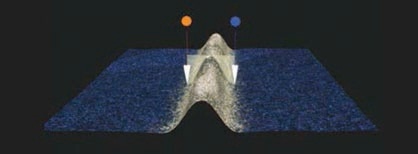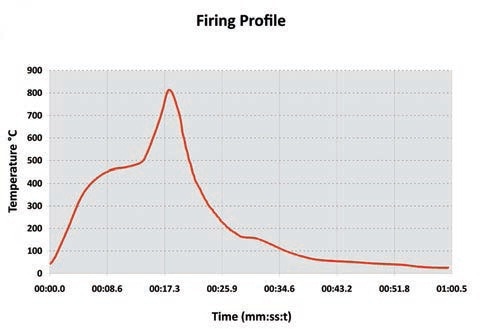Solar cell manufacturers are turning to Heraeus for PV pastes in their quest for increasing efficiencies and superior quality. Heraeus has established itself as a leading PV paste developer, as well as the highest quality supplier, through delivering the best performance to cost ratio in the market.
SOL9410S and SOL9411 are next generation front-side silver metallization pastes that build on Heraeus' impressive track record. Optimized for high throughput and high efficiency processing, SOL9410S and SOL9411 were formulated to exceed the quality of the company’s benchmark pastes, SOL9235H and SOL9273MA, in every aspect. The unique chemistry of SOL9410S and SOL9411 improve the etch of the SiNX:H anti-reflective coating, thus, significantly improving contact while preserving the junction quality on various emitters and wafers. SOL9410S and SOL9411 are optimized for a range of emitter depths and concentrations.
Key Benefits
The key benefits of SOL 9410S and SOL9411 are:
- High efficiency
- Industry leading performance
- Excellent aspect ratio
- Excellent contact quality on various emitters and wafers Cd free
- Excellent solderability
- Designed for high sheet resistance emitter applications
Typical Properties
Viscosity
HBT Cone and Plate Viscometer (Brookfield)
- 180 – 240kcps
- CPE-51 spindle, @ 1 RPM, 25°C
Cone and Plate Viscometer (Haake)
- 16 – 23Pas
- Plate/cone (Ø = 20mm, angle = 0.5°),@ 100s-1, 25°C
Solids
89.5 ± 1%
Solderability
- 5 second dip @ 230°C
- Sn62, SAC305
- Use with low solids, no clean flux
Wafer Types
The wafer types include mono and multicrystalline
High Aspect Ratio
SOL9410S and SOL9411 have been formulated to optimize the etching rate and make good electrical contact on lightly doped shallow emitter silicon wafers while minimizing damage to Si surfaces during firing to maintain the junction quality and low saturation current density. Also, the composition of SOL9410S and SOL9411 were especially designed for higher manufacturing throughput and high aspect ratio gridlines to minimize shading while increase line conductivity.

Figure 1. SOL9411 leads to excellent printing performance as confirmed by Fraunhofer ISE
High Sheet Emitter
Independent studies at leading R&D institutes confirm that SOL9410S and SOL9411 promote metal precipitate (contact formation mechanism) on high sheet resistance silicon wafers.
Recommended Processing Guidelines
The printing guidelines are provided in Table 1.
Table 1. Printing Guidelines
| Design Finger Line Opening |
Screen Parameter Recommendations |
| ≥ 80µm |
325 mesh, 23µm stainless steel wire, 15 – 23µm EOM
280 mesh, 25µm stainless steel wire, 15 – 23µm EOM |
| 50µm – 80µm |
290 mesh, 20µm stainless steel wire, 15 – 23µm EOM |
| ≤ 50µm, seed layer |
400 mesh, 18µm stainless steel wire, 5 – 10µm EOM |
| Squeegee Durometer |
70A Shore |
| Squeegee Speed |
≥ 180mm/sec |
| Squeegee Pressure |
50 – 90N |
| Off-contact Distance |
1.1 – 1.7mm |
| Wire Bias |
22.5 - 30° |
Other guidelines are:
- It is typically dried in an IR dryer with a set point of approximately 250°C in less than 20 seconds.
- Firing thickness is ≥20µm (fired)
- Line Resolution (finger width) is ≥ 65µm
- Thinner used is RV-354
- Store in a dry location at 5°C – 25°C.
Firing profile is shown in Figure 2.

Figure 2. Firing Profile
Furnace profile is shown in Table 2.
Table 2. Furnace profile
| Furnace Profile |
Time Above (sec) |
| Temperature |
500°C |
600°C |
700°C |
725°C |
| Lower Limit(s) |
7.0 |
3.5 |
2.0 |
1.5 |
| Upper Limit(s) |
22.0 |
10.0 |
5.0 |
4.0 |
*Actual zone settings and belt speed vary with furnace.
About Heraeus Photovoltaics
The Heraeus Photovoltaics Business Unit is an industry leading developer and manufacturer of metallization pastes for the photovoltaic industry.
Heraeus has been a manufacturer of thick film pastes for over 40 years. Since 2008, we have been an innovative supplier to the photovoltaics industry, working with c-Si cell manufacturers to improve their cells’ efficiency for both conventional and advanced cell designs.
Heraeus have developed silver metallization pastes that have been integrated into commercially available technologies such as MWT, Double Print, Dual Printing, Selective Emitter, Back Side Passivation and N-Type Cells.
Heraeus have also expanded our capabilities and developed lower temperature processing pastes for Thin Film and other c-Si technologies.
Heraeus' goal is to improve our customers’ cell efficiency and reduce their cell’s cost per watt through our innovative paste design technology.

This information has been sourced, reviewed and adapted from materials provided by Heraeus Photovoltaics.
For more information on this source, please visit Heraeus Photovoltaics.